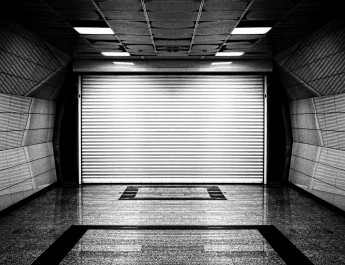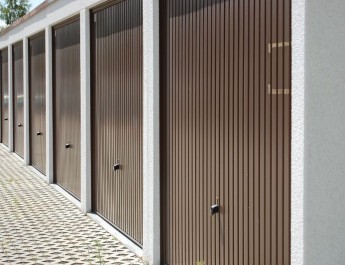When it comes to your home, the garage door is often an overlooked yet essential element. Not only does it play a critical role in the aesthetics of your property, but it also contributes significantly to security and functionality. Selecting the right garage door for your needs is a decision that should not be taken lightly. With a multitude of options available, it’s essential to consider several key factors to make an informed choice. In this guide, we’ll explore what you need to pay attention to when choosing a garage door.
1. Material Matters
One of the first decisions you’ll need to make when selecting a garage door is the material. Garage doors come in various materials, each with its own set of advantages and disadvantages. Here are some of the most common materials:
a. Steel
Steel garage doors are known for their durability and low maintenance. They are resistant to dents and can withstand harsh weather conditions. They come in various styles, from traditional to modern, and can be customized with different finishes and colors. However, steel doors may rust over time, so proper maintenance is essential.
b. Wood
Wood garage doors offer a classic and timeless look that can enhance the curb appeal of your home. They are available in various wood species and can be stained or painted to match your home’s exterior. While wood doors are beautiful, they do require regular maintenance, including painting or staining, to prevent rot and warping.
c. Aluminum
Aluminum garage doors are lightweight and resistant to rust. They are an excellent choice for coastal areas with high humidity. Aluminum doors can be customized with various finishes and are often chosen for modern and contemporary homes. However, they may not provide as much insulation as other materials.
d. Vinyl
Vinyl garage doors are low-maintenance and resistant to dents and rust. They are also known for their energy efficiency and durability. Vinyl doors come in various styles and colors and can mimic the look of wood. They are an excellent choice if you want a hassle-free and long-lasting option.
e. Fiberglass
Fiberglass garage doors are lightweight and resistant to corrosion. They are a good choice if you want a low-maintenance door with the appearance of wood. However, fiberglass doors may not be as durable as some other materials and may crack or fade over time.
When choosing a material, consider your climate, budget, and aesthetic preferences. It’s also essential to think about the level of maintenance you are willing to commit to, as this can vary significantly depending on the material.
2. Insulation for Comfort and Energy Efficiency
The insulation of your garage door is a crucial factor to consider, especially if your garage is attached to your home or used for purposes other than parking your car. Insulated garage doors help regulate the temperature inside the garage, making it more comfortable and energy-efficient.
a. Single-Layer vs. Double-Layer vs. Triple-Layer Insulation
Garage doors typically come in three levels of insulation:
- Single-Layer: These doors consist of a single layer of material and provide minimal insulation. They are often the most affordable option but may not be suitable for regions with extreme temperatures.
- Double-Layer: Double-layer doors have an additional layer of insulation, typically made of polystyrene or polyurethane. They offer better insulation and are a good choice for moderate climates.
- Triple-Layer: Triple-layer doors have the highest level of insulation, usually with a layer of insulation material sandwiched between two layers of steel. These doors provide excellent insulation and are ideal for areas with extreme weather conditions.
The level of insulation you need depends on your climate and how you plan to use your garage. If you use it as a workshop or home gym, a well-insulated door can make a significant difference in comfort and energy savings.
Energy Efficiency
An insulated garage door can help reduce energy costs by preventing heat loss in the winter and heat gain in the summer. Look for garage doors with a high R-value, which indicates their insulating properties. Higher R-values are better for energy efficiency.
3. Style and Design
Your garage door is a prominent feature of your home’s exterior, so its style and design should complement the overall aesthetic. Here are some style considerations:
a. Traditional vs. Modern
Consider the architectural style of your home when choosing a garage door. Traditional homes often look best with classic, carriage-style doors, while modern homes may benefit from sleek and minimalist designs.
b. Color and Finish
Garage doors are available in a wide range of colors and finishes. Choose a color that complements your home’s exterior color palette. You can also opt for a textured finish or wood grain pattern for added visual appeal.
c. Windows and Decorative Hardware
Windows can add character to your garage door and allow natural light into the garage. Decorative hardware, such as handles and hinges, can enhance the door’s appearance. Ensure that any decorative elements you choose match the overall style of your home.
d. Customization
Many garage door manufacturers offer customization options, allowing you to create a door that perfectly suits your preferences. From unique panel designs to custom paint colors, you can tailor your garage door to your liking.
4. Security Features
A secure garage door is essential for the safety of your home and belongings. When evaluating garage door options, consider the following security features:
a. Automatic Reversal System
Modern garage doors are equipped with automatic reversal systems that detect obstacles in the door’s path and immediately reverse its direction to prevent accidents or damage. Ensure that the door you choose has this safety feature.
b. Rolling Code Technology
Garage door openers with rolling code technology generate a new code each time the door is operated, making it more challenging for thieves to gain access by intercepting the code.
c. Keypad Entry
A keypad entry system allows you to set a secure code to access your garage without a remote or key. It’s a convenient and secure option for family members and trusted individuals.
d. Smartphone Control
Some garage door openers can be controlled via smartphone apps, allowing you to monitor and control your garage door remotely. This feature adds an extra layer of security and convenience.
5. Size and Type
The size and type of garage door you need depend on the dimensions of your garage and how you plan to use it. Here are some considerations:
a. Standard vs. Custom Size
Most garage doors come in standard sizes to fit typical garage openings. However, if you have a non-standard or oversized garage opening, you may need a custom-sized door. Measure your garage opening accurately to ensure a proper fit.
b. Single vs. Double Door
Consider whether you need a single or double garage door. Single doors are suitable for one-car garages, while double doors are necessary for two-car garages. Double doors can also provide a more significant entry point for larger vehicles.
c. Roll-Up vs. Sectional vs. Side-Hinged
Garage doors come in various types, including roll-up (also known as overhead), sectional, and side-hinged. The type you choose may depend on your garage’s layout and your preferences.
- Roll-Up/Overhead: These doors roll up into a coil above the opening. They are the most common type and are suitable for most garage configurations.
- Sectional: Sectional doors are made up of horizontal panels that slide up and overhead when opened. They are known for their smooth operation and space-saving design.
- Side-Hinged: Side-hinged doors swing open like traditional carriage doors. They are a charming choice for a rustic or classic look but require clearance space on the sides of the garage opening.
6. Maintenance and Longevity
Consider the long-term maintenance requirements and durability of the garage door material you choose. Some materials, like steel and vinyl, are low-maintenance and resist rust and corrosion. Wood doors, while beautiful, require more upkeep to prevent rot and maintain their appearance.
Additionally, look for garage doors with warranties that cover both the door and its components, such as the springs and opener. A good warranty can provide peace of mind and save you money on repairs down the road.
7. Budget Considerations
Garage doors come in a wide range of prices, so it’s essential to establish a budget before you start shopping. Keep in mind that the initial cost of the door is just one part of the equation. Consider long-term costs, such as maintenance and energy efficiency, when making your decision.
While it’s tempting to choose the least expensive option, remember that quality and durability are essential factors. Investing a bit more upfront in a high-quality garage door can save you money in the long run.
8. Professional Installation
Installing a garage door is not a DIY project for most homeowners. Improper installation can lead to safety hazards and operational issues. It’s crucial to hire a professional garage door installer with experience and expertise in the field.
A professional installer will ensure that the door is properly aligned, balanced, and operates smoothly. They will also make any necessary adjustments to the garage door opener and safety features to ensure everything functions correctly.
9. Local Building Codes and Regulations
Before purchasing a garage door, check with your local building authorities and homeowners’ association (if applicable) to ensure compliance with local building codes and regulations. Some areas may have specific requirements for garage door materials, insulation, and safety features that you must adhere to.
10. Maintenance Tips
Once you’ve chosen and installed your garage door, regular maintenance is essential to ensure its longevity and proper functioning. Here are some maintenance tips:
- Lubricate moving parts: Periodically lubricate the springs, rollers, and hinges to prevent friction and ensure smooth operation.
- Inspect and tighten hardware: Check for loose bolts and nuts and tighten them as needed to maintain the door’s stability.
- Clean and paint (if necessary): If you have a wood door, regularly clean it and repaint or re-stain it as recommended to prevent rot and maintain its appearance.
- Test safety features: Test the automatic reversal system and photoelectric sensors regularly to ensure they are functioning correctly.
- Replace weatherstripping: Replace worn or damaged weatherstripping to maintain insulation and keep out drafts and moisture.
Conclusion
Choosing the perfect garage door for your home involves considering a variety of factors, from the material and insulation to style, security features, and budget considerations. Take your time to research and explore different options, and don’t hesitate to consult with a professional garage door installer for guidance. By paying attention to these crucial factors, you can select a garage door that not only enhances your home’s aesthetics but also provides security, comfort, and functionality for years to come. Remember that investing in a high-quality garage door is an investment in the overall value and appeal of your home.




